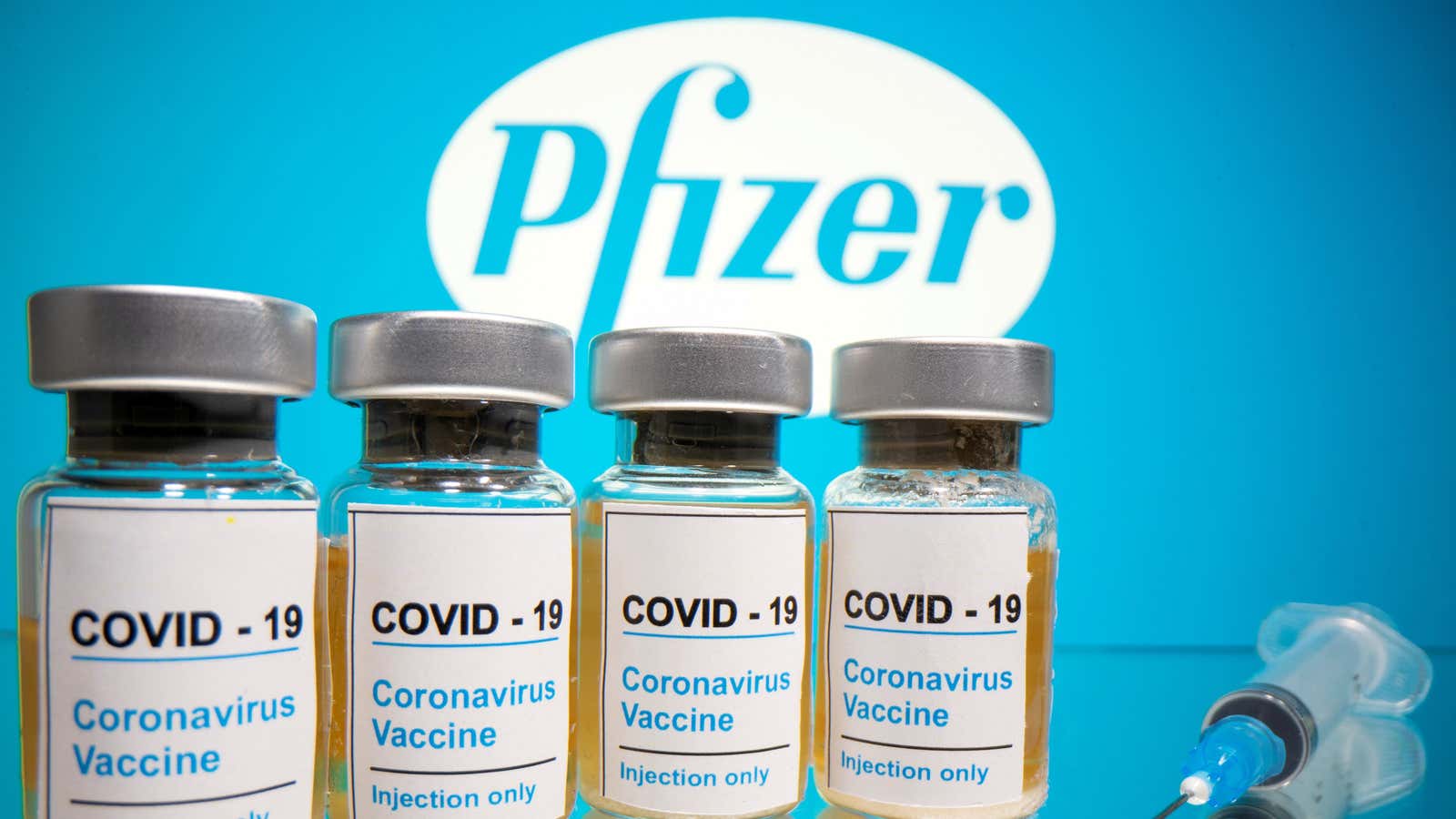At this point in the Covid-19 vaccine race, Pfizer and BioNTech appear to be the front runners. On Monday (Nov. 9), Pfizer said early results from its late-stage clinical trial showed the vaccine could prevent 90% of infections—although it’s still finalizing data collection before it submits to the US Food and Drug Administration (FDA) for emergency use authorization or approval.
If Pfizer and BioNTech’s trial continues to go well, their vaccine could be the first of its kind to reach the market. Unlike many other available vaccines, it’s not a live virus that has been weakened, a virus that has been killed, nor a signature viral protein that can dupe cells into producing protective antibodies. Instead, this vaccine relies on messenger RNA (mRNA for short), a type of genetic material that our cells can use as an instruction manual to kick off the process of building virus-busting antibodies. The exciting aspect of this mRNA vaccine—besides its likely efficacy—is that it opens the door for more vaccines like it that can be brought to market.
Broadly, the vaccines available today fall into three buckets. The very first vaccines were made from live viruses that have been weakened or inactivated. These have historically generated some of the strongest immune protection—especially the weakened versions—because they have the most in common with actual pathogens. Examples include vaccines against the measles, mumps, and rubella; the chickenpox vaccine and polio vaccine work the same way, too. Because they’re similar to infectious viruses, developers take extra caution in testing them for safety—especially when confronting a novel virus like SARS-CoV-2.
Then there are protein subunit vaccines, which recreate just one portion of the virus. These still generate an immune response, but they pose no risk of infection. Subunit vaccines like the hepatitis B vaccine and the HPV vaccine can enter the body via all kinds of cellular delivery systems—including genetically repurposed, non-infectious viruses.
The problem with both these kinds of vaccines, however, is that they can take a decade or more to research, develop, and test in clinical trials. But the pressure of the pandemic led researchers to finally execute a third class of vaccine: a nucleic acid vaccine based on mRNA.
Nucleic acid vaccines work by providing the instructional genetic code for the body to make non-infectious viral bits and bobs that kick off an antibody response. So far, the only approved nucleic acid vaccine is for Ebola, which the FDA approved late last year; it uses a form of recombinant DNA to eventually generate immunity against the virus.
The Pfizer/BioNTech uses another kind of nucleic acid called mRNA. As Quartz previously reported, mRNA vaccines provide a different bit of code for our cells to translate into bits of the SARS-CoV-2 spike protein, which then solicit an immune response. It sneaks those instructions into our bodies using lipid nanoparticles that mimic other types of proteins our cells are used to letting through their membranes.
The advantage of nucleic acid vaccines is that they can be developed shortly after researchers genetically sequence a pathogen; that could cut the development time from years down to months. The reason we haven’t had these kinds of vaccines before is because scientists struggled to figure out how to get nucleic acid vaccines into our cells where they could be utilized; without its fatty ferry, the genetic material would be destroyed like cellular waste.
It seems like Pfizer and BioNTech were the first to crack this code; if it succeeds, others may follow in future pandemics.
